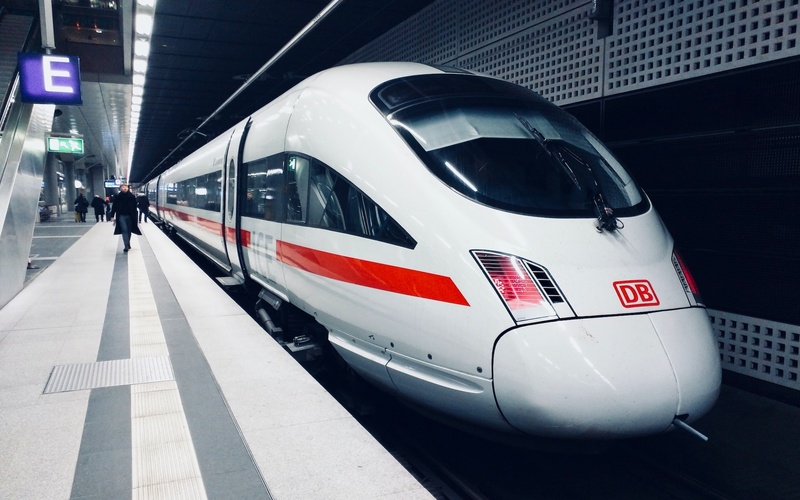The most traditional way to see Europe is to travel Europe by train. It is sentimental. It is motivating. It is quite effective. Comfortable is it? It is nearly mystical, according to some. It also seems a little mysterious to people who do not live in a nation where train travel in fact is common.
Europe’s Various Forms of Train Travel

Train holidays in Europe are truly enjoyable. Below are the various forms of train travel in Europe that you can make the most of.
- Intra-City Transport/Metro- Metros, also known as subways (although some may run above ground), are a particular city’s public transit system.
- Regional Trains/Commuter Rails- Regional trains and commuter lines are not quite the same thing. These are slower-moving trains that travel inside a particular nation or region or connect nearby villages to a big city.
- Long Distance Trains/High-Speed Trains- These are lengthy trains that go across a nation.
- Tourist Trains- Though they are officially public transport, these trains are primarily utilized for sightseeing and are therefore charged accordingly.
- Sleeper Trains- In theory, sleeper trains are merely long-distance trains with sleeping carriages inside; they do not really belong in their own category.
European Train Tickets- The Different Types
Cheap train tickets for Europe are available but there are a few terms to understand before you look into purchasing train tickets:
- Tickets for First and Second Classes-There are typically two classes of tickets available when taking a European rail trip: first class and second class.
- Fixed Price vs. Variable Price Tickets-As the name suggests, the cost of variable-price tickets tends to rise as the departure date approaches. These tickets are the most typical type you may see when taking a train across Europe, and they are typically used for long-distance and high-speed travel.
Facts about Rail Pass
There are two types of Europe rail passes that are utilized for train travel throughout Europe: Interrail and Eurail passes. The use of both pass kinds is quite similar; the type of pass you require depends on your country of residency or nationality. Train travel within and between European nations is permitted with each pass. During the usage period, the passes are good for a predetermined number of travel days.
There are various sorts of Interrail & Eurail passes available for individuals of all ages, not just students. Interrailing in Europe is available to you if you are:
- A European citizen having a valid European passport/are a dual citizen.
- A European Union’s non-citizen who has spent a minimum of 6 months there.
Should you not fit under either of the two categories, you will need the Eurail pass. For best results, explore the Eurail pass in detail.
How to Get Your Tickets for a Train Ride across Europe?
The following step is to receive your tickets after purchasing them!
These are the three principal choices.
- Online- These days, you can purchase the majority of European rail tickets online and download them to your phone. This by far truly is the simplest as well as fastest means of getting your tickets, when accessible.
- At the Station- As previously indicated, you have the option to purchase your tickets in person at the station where you are leaving, or you can pick up your online-purchased tickets there. Although most countries still offer the option, there is usually no good reason to pick paper tickets you purchased online rather than downloading them.
- At Home- Tickets for train travel around Europe can be mailed to your house if you purchase them well in advance of the vacation since many nations offer this service.
How to Take a Train through Europe: A Comprehensive Travel Guide
This section is for you if you are ready to arrange your first train trip in Europe but are unsure, worried, or even a little scared about it! If you carefully follow these directions, you should have no trouble taking trains throughout Europe.
- Get your ticket now-As we mentioned above, making reservations online is typically the simplest option for lengthy or cross-country travel.
- Verify that you have your ticket in hand – This may be printed on a sheet of paper that you hold in your hands or downloaded onto your phone.
- Proceed to the appropriate rail station-There are multiple rail stations in most large European cities, so before you go, be sure you are going to the correct one.
- Identify your medium – Similar to an airport, the first thing you will do while trying to locate your train platform is to look at the (sometimes enormous, occasionally perplexing) boards that list the timings and destinations. Instead of focusing on the destination, it is advisable to search for your train using the train number, company, & departure time.
- Get your ticket validated – You must validate your paper ticket before boarding if you have one. Although the ticket validation kiosks are usually located right before reaching the platform, they can occasionally be overlooked if you are not looking for them.
- Locate your train car & seat number, if relevant-You must ascertain the precise train car & seat number to occupy if there are reserved seats on your trip. On long-distance, high-speed trains, this is most typical.
- Alternatively, just seek out the relevant class – The only seating decisions you will need to make if the train has open seating are first or second class.
- Pack your bags – This means that depending on the train, you may put your baggage in the racks located at the ends of each car, above the seats in some, or even in the spaces in between the seats in others.
- Take in the vistas as you settle – The finest part of taking a European train is when you finally get to relax and take in the scenery after you have located your seat and put your bags away.
- For when a conductor stops by, keep your ticket close at hand – A conductor will stop by to check the ticket at some time when you are traveling through Europe by train. This could take place 5 minutes into your trip, 5 hours into your voyage, or both.
- As you near your destination, pay close attention to everything you hear – It is time to listen closely to the announcements as you draw closer to your destination.
- Get out of the train as soon as possible – When your stop comes, get ready to get out right away. This means having your bags ready and waiting to get off at the end of a train car.
Effective Tips for a Smooth Train Travel
- If you are determined to take a train across Europe, make your plans in advance.
- For rail travel in Europe, make sure to reserve complicated routes well in advance.
- Drinks and food should be brought for the journey.
- Packing cards or game for a lengthy train travel could be a good idea.
- Onboard internet access is not a given.
- Ensure that you arrive at the appropriate train station.
- And arrive early.
- Take advantage of the chance to go by train overnight if you can!
- Bring hand sanitizer and toilet paper
- Discounts may be available if you are under 26 or a student.
- In Europe, you can usually carry dogs (and cats) on trains!
- Be mindful of societal conventions.
Bottom Line
Rail travel in Europe is convenient, pleasant, beautiful, and effective. Your travels will be simpler and more comfortable than on an airplane, and there is also far less chance of incurring additional fees for luggage or check-in! Excellent high-speed networks cover most of Europe, and even on slower routes, you will be treated to breathtaking scenery and enough room to stretch your legs. You get a fantastic opportunity to witness the scenery transform before your eyes when you travel overland, from rolling countryside to coastal vistas to mountains. Pack a picnic or go to buffet carriage for a view while you eat. To add even more special touches to the trip, you might choose to upgrade to the first class if you would like.
